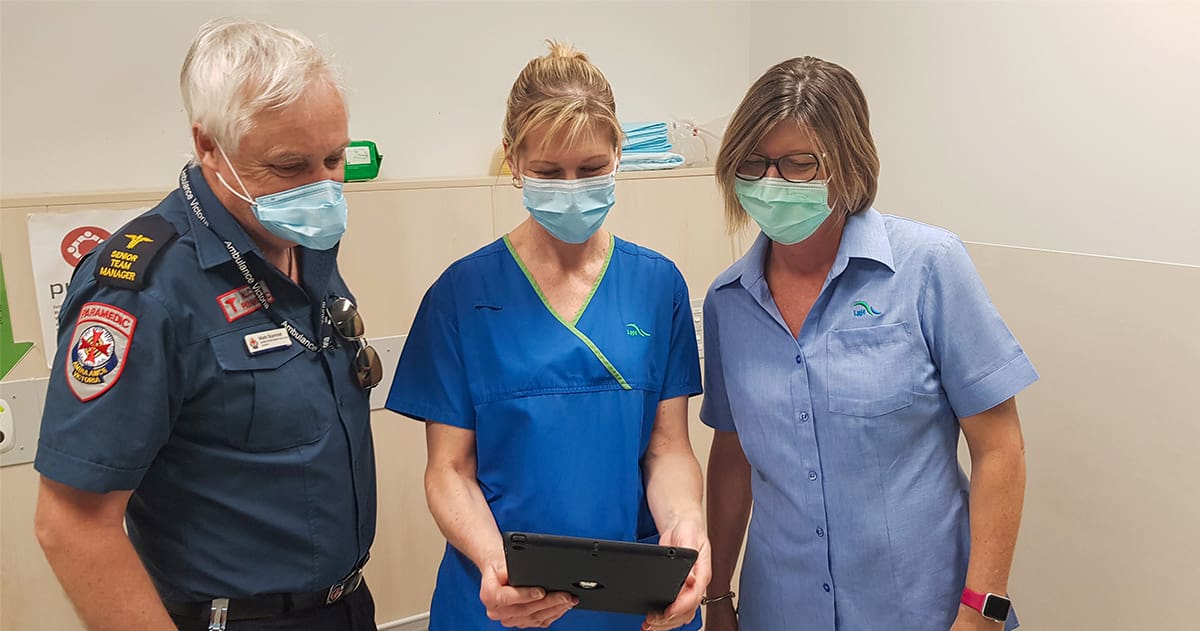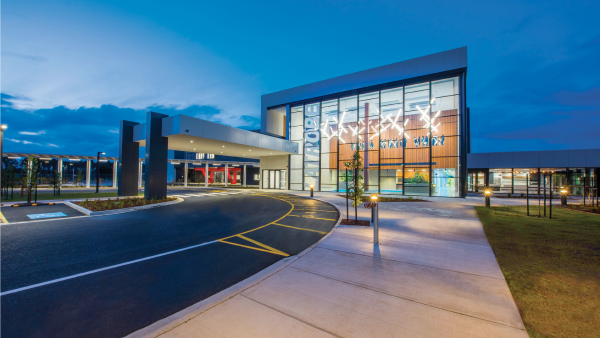Baker to Vegas: Leveraging Pulsara to Manage a Planned Event
Although they have the advantage of prior awareness and preparation, large-scale planned events pose unique challenges for emergency management...
2 min read
 Team Pulsara
:
Mar 08, 2023
Team Pulsara
:
Mar 08, 2023

Editor's Note: This post is adapted from a report first published by the Victorian Agency for Health Information, a division of Australia's Department of Health. Check out the original version here.
A recent report published by a division of Australia's Department of Health, the Victorian Agency for Health Information, confirmed the benefit of using communication and logistics technology for patient care at Latrobe Regional Hospital in Traralgon, Victoria. New data from the Australian Stroke Clinical Registry showed as much as an 80% reduction in time-to-treatment for critical stroke patients.
Latrobe Regional Hospital is a busy regional health service in the eastern Victorian town of Traralgon, with 328 beds and 2,465 staff servicing a catchment of more than 270,000 people. The emergency department alone sees 42,000 people each year.
At the recent National Stroke Quality Improvement Workshop, Latrobe Regional Hospital shared how they used registry data to evaluate newly implemented technology designed to streamline day-to-day operations and facilitate better treatment times. The Australian Stroke Clinical Registry data played a key role in evaluating the use of Pulsara at Latrobe Regional Hospital, responding to staff questions about how the health service would measure the performance and impact of the new technology.

Pulsara is a healthcare communication and logistics platform that unites care teams on a single patient channel to streamline communication and get the right information to the right team members at the right time. At Latrobe Regional Hospital, Pulsara is being used by field providers to notify the hospital about incoming patients who require time-critical care. The health service's aim in using Pulsara was to speed treatment times, thereby improving patient outcomes and quality of life. The app was initially implemented for stroke and STEMI patients and has since proved useful for a wide range of patients, including those with major trauma, sepsis, COVID-19, and other complex conditions.
For stroke patients, the data showed an 80% reduction in the time it took for patients to receive a CT scan, as well as a 44% reduction in time-to-first medical review for thrombolysed stroke patients.
Using clinical registry data, a three-month pre-and-post review of Pulsara showed a significant reduction in time-to-treatment for critical patients. For stroke patients, the data showed an 80% reduction in the time it took for patients to receive a CT scan, as well as a 44% reduction in time-to-first medical review for thrombolysed stroke patients. Overall, the use of Pulsara at Latrobe Regional Hospital has facilitated improved communications across all treatment teams and areas.
This is the most recent data from Latrobe Regional Hospital since they implemented Pulsara in 2020. After just six months of using Pulsara, they released data showing a 68% reduction in door-to-CT times, dropping from an already impressive 22 minutes down to just 7 minutes on average.
In 2021, clinicians from Latrobe Regional Hospital participated in a roundtable discussion with a panel of regional experts on their use of Pulsara to improve treatment times and care for time-sensitive patients. During the discussion, Janet May, Stroke and Pulsara Coordinator at Latrobe, shared how the technology has impacted their patient care. “The best outcome we've had is quicker treatment times for patients, because it's really streamlined our communication, right from pre-notification into the ED and then to our internal teams. One of the big things we noticed was the improvement in the accuracy of the patient demographic data coming in.” (Watch the video recording of the panel discussion below).
The Victorian Agency for Health Information report concludes that utilizing Pulsara is a clear benefit for patient care. "Overall, the app has substantially improved patient care at LRH, as well as facilitating improved communications across all treatment teams and areas. Registry data was key to confirming this initial improvement and will help to support further innovations and improvements in the future."
Over the last few years, a group of leading experts and clinicians in Victoria, Australia have implemented cutting-edge technology to improve communication between their care teams. In this roundtable discussion, they share the strategies behind their success.

Although they have the advantage of prior awareness and preparation, large-scale planned events pose unique challenges for emergency management...

For Those Who Love a Good "Oopsie!" At Pulsara, we pride ourselves on enabling secure, HIPAA-compliant communication for healthcare teams. But let’s...

March Recap A New Integration: Improving Data Management, Streamlining Workflows, and Improving Care CoordinationOnly a few days ago, we announced...